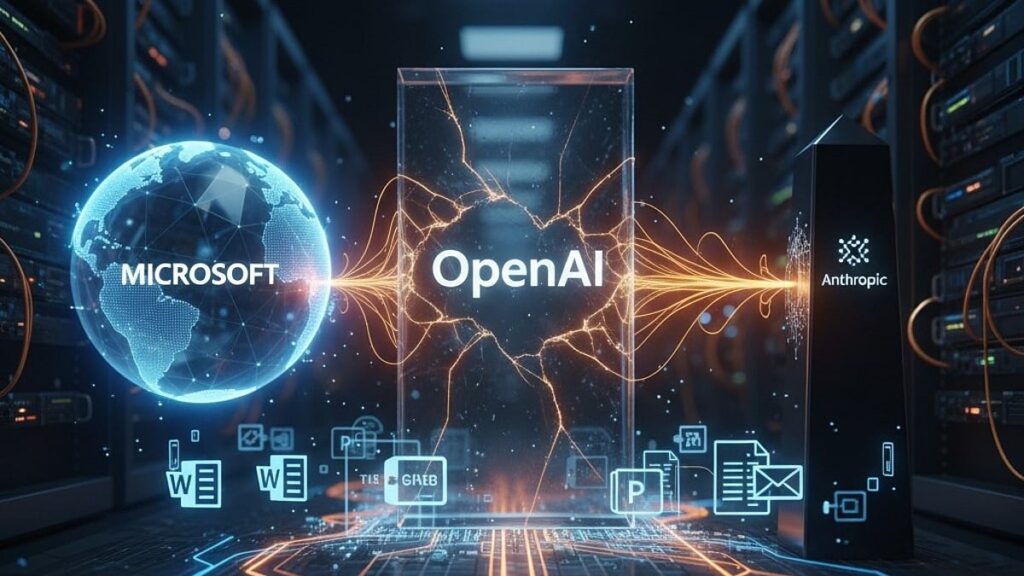As businesses increasingly integrate artificial intelligence and automation into their workflows, the competitive landscape is evolving rapidly. A recent report highlights Microsoft’s decision to collaborate with Anthropic to enhance its productivity tools—Word, Excel, PowerPoint, and Outlook—while maintaining its partnership with OpenAI. This marks a pivotal shift as Microsoft reduces its reliance on a single provider for AI capabilities in its suite of applications. Understanding the implications of such partnerships and the nuances of different AI tools is crucial for SMB leaders and automation specialists navigating this expanding market.
The choice between AI platforms and automation tools can significantly influence operational efficiency and bottom-line results. OpenAI and Anthropic are two prominent players in the AI landscape. OpenAI, known for its cutting-edge generative models, excels at producing human-like text, which is advantageous for businesses looking to enhance customer interactions, content creation, and data analysis. Its advanced capabilities make it highly effective for applications requiring nuanced understanding and context-awareness. However, OpenAI’s services can be relatively expensive, particularly for smaller teams that may have limited budgets. The cost of API access, combined with the need for continuous model retraining, can add up, potentially impacting return on investment.
Anthropic, on the other hand, is still emerging but has drawn attention for its focus on aligning AI systems with human intentions. Its approach emphasizes the importance of interpretability and safety in AI applications. For SMBs, this can be particularly valuable, as it addresses concerns around reliability and compliance. While Anthropic’s capabilities may not yet match the breadth of OpenAI’s offerings, it provides a complementary option that may help organizations diversify their AI strategies and address specific needs, especially in areas like compliance-sensitive tasks or industries requiring heightened scrutiny of AI behavior. This diversification could lead to more tailored solutions, even if it comes at an initial cost in terms of integration and learning curves.
Businesses must also consider automation tools like Make and Zapier. Both platforms offer robust capabilities for automating workflows but cater to slightly different needs. Zapier, with its intuitive user interface and extensive app integration, leads in user-friendliness, making it accessible for teams without a technical background. This enables quick deployment and supports a wide array of applications. However, its capabilities can be limited when handling complex multi-step automations or advanced data manipulations, which might necessitate additional tools or more expertise.
Conversely, Make provides advanced automation functionalities, allowing for deeper customization and more complex workflows. This can be a double-edged sword; while it offers powerful features, the greater complexity might deter less experienced users. Additionally, Make can support multi-step processes and enhance data workflows, which could prove more efficient and ultimately cost-effective for SMBs engaged in intricate operational requirements. As with AI integration, the choice between Make and Zapier hinges on the specific needs and technical capabilities of the organization.
When evaluating the ROI of these platforms, leaders should adopt a long-term perspective. Integrating AI and automation tools can reduce operational costs, enhance employee productivity, and improve customer satisfaction due to more responsive service. However, measuring the initial investment against ongoing savings, efficiency gains, and revenue growth should also take into account the potential risks, such as reliance on external providers and the shifting landscape of technology partnerships. Encouraging a balanced adoption strategy, where businesses leverage multiple tools and progressively refine their automation processes can maximize return while mitigating risks associated with dependence on single-platform providers.
Furthermore, scalability remains a critical consideration. As organizations grow, their technology solutions must evolve in tandem. Both OpenAI and Anthropic are positioned to scale; however, SMB leaders must consider how easily these platforms can integrate with existing systems and adapt to increasing data volumes or user numbers. Similarly, automation tools like Make and Zapier should be evaluated not only for their immediate capabilities but for their long-term viability in scaling workflows without significant reconfiguration or financial strain.
To summarize, selecting the right AI and automation tools requires a nuanced understanding of their strengths, weaknesses, costs, and scalability. Diversifying partnerships—like Microsoft’s move to collaborate with both OpenAI and Anthropic—can mitigate risk and foster innovation within the organization. Furthermore, careful evaluation of automation platforms such as Make and Zapier will enable SMB leaders to align technology investments with their strategic goals.
FlowMind AI Insight: In today’s competitive landscape, leveraging a diverse array of AI tools can not only drive efficiency but also protect organizations from the uncertainties of technological reliance. Balancing quality, cost, and flexibility in tool selection will be key to maximizing ROI and ensuring sustainable growth.
Original article: Read here
2025-09-10 09:19:00

